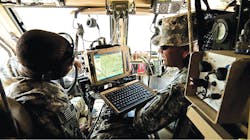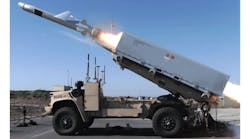ABERDEEN PROVING GROUND, Md. – U.S. Army navigation and guidance experts are surveying industry to find companies able to develop open-systems infantry and vehicle-mount position, navigation, and guidance (PNT) that operates independently of the satellite Global Positioning System (GPS).
Officials of the Army Contracting Command at Aberdeen Proving Ground, Md., issued a request for white papers (W56KGU-23-R-RTID) earlier this month for the PNT Enablers and Modular Open System Architectures (MOSA) for Complementary & Assured Navigation Modules project.
Infantry PNT applications require a low size, weight, and power (SWaP) design to reduce the burden on soldiers operating on foot. While current Army systems rely on GPS for PNT, electromagnetic interference can disrupt, degrade, or deny access to the satellite-based system.
Instead, Army experts are looking for complementary sensor modules and software plugins with infantry or vehicle-mount reference systems. Sensors for the infantry system should be low SWaP and integrate via internal and external connectors to provide PNT data.
Related: SOSA standard taking hold in military embedded computing
Sensors for the vehicle-mount system, meanwhile, should focus on providing high levels of PNT performance while also minimizing SWaP. Sensors for either system should comply with defined interface control documents (ICDs), APIs, and data standards.
Software plugins should comply with the pntOS API and work with already developed pntOS-based software baselines. Combinations of complementary sensor modules and software plugins also are desirable. Complementary sensor modules and software plugins should provide improvements to the soldier’s assured positioning access and resiliency necessary for warfighting.
Complementary sensor modules and software plugin capabilities should be at least laboratory breadboard models that meet Technology Readiness Level (TRL) 4 to 6; integrate easily with low-SWaP infantry reference systems; and integrated easily with military land vehicles if integrating with a vehicle-mount reference system.
Infantry and vehicle-mount PNT systems should use the ASPN 2023 data standard for navigation messages, and capitalize on the pntOS API and be compliant to the API. More information on pntOS is online at https://pntos.com.
White papers should address complementary sensor modules and software plugins that can integrate with already developed infantry and vehicle-mount reference systems. Army officials say they anticipate contract awards in July 2024.
Companies interested should email white papers no later than 16 April 2024 to [email protected].
Email questions or concerns to [email protected]. More information is online at https://sam.gov/opp/d609d35048c14bbf94e9533167356733/view.



